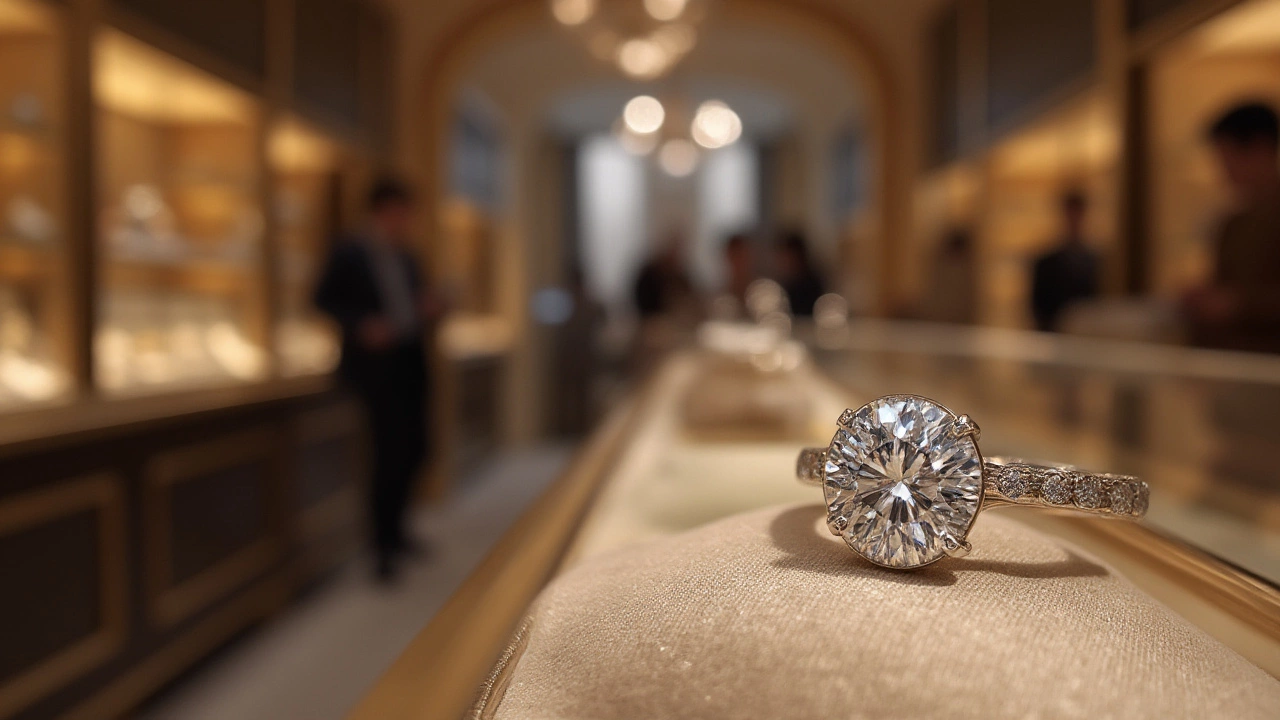Engagement Ring Value: How to Find Out What Your Ring Is Worth
Got an engagement ring and wonder how much it’s really worth? You’re not alone. Many couples want to know the value before selling, insuring, or just out of curiosity. The good news is that figuring it out isn’t rocket science. By looking at a few key details, you can get a solid estimate that feels right.
Key Factors That Determine Ring Value
First up, the diamond. Its four C’s—carat, cut, color, and clarity—drive most of the price. A higher carat weight usually means a higher price, but a well‑cut stone can outshine a bigger, poorly cut one. Color and clarity work the same way: the clearer and more colorless, the pricier.
Next, the setting. Gold, platinum, or palladium each have different market values. A plain solitaire setting costs less than an intricate halo or vintage design. Brand matters, too. Rings from well‑known designers or luxury houses can fetch a premium even if the stone is similar to a lesser‑known brand.
Don’t forget market trends. Diamond prices fluctuate with supply and demand, and some years see a dip while others see a spike. Keep an eye on recent auction results or online marketplaces to gauge current rates.
How to Get an Accurate Appraisal
While you can do a quick online estimate, a professional appraisal gives the most reliable number. Look for a certified gemologist—someone with a GIA or IGI qualification. They’ll examine your ring under a microscope, weigh the stone, and check the setting for any wear.
Bring any paperwork you have—certificates, receipts, or previous appraisals. Even if you don’t have them, the appraiser can often identify the diamond’s origin and quality. Expect to pay a modest fee, usually a flat rate or a small percentage of the estimated value.
If you need a valuation for insurance, request a written report that includes a photo, detailed description, and a clear statement of worth. This document makes filing a claim easier and helps you keep the right coverage level.
For a quick DIY check, try reputable online calculators. Input the carat, cut, color, clarity, and setting metal. The tool will give you a ballpark figure. Remember, online results are just a starting point—they don’t replace a hands‑on appraisal.
Lastly, think about how you’ll use the value. If you’re planning to sell, you’ll likely get less than the appraisal because retailers need a margin. If you’re insuring, the full appraisal amount is what you want to protect.Bottom line: understand the four C’s, know your setting’s metal, get a certified appraiser for the most accurate number, and keep an eye on market shifts. With these steps, you’ll have a clear picture of your engagement ring’s value and feel confident about any next moves.
How Big Is a $10,000 Ring? What to Expect for Your Money
What does a $10,000 ring really look like? Uncover ring size, carat weight, style options and buying tips in this detailed and practical guide.
Read more